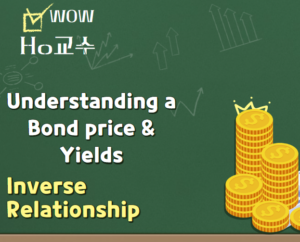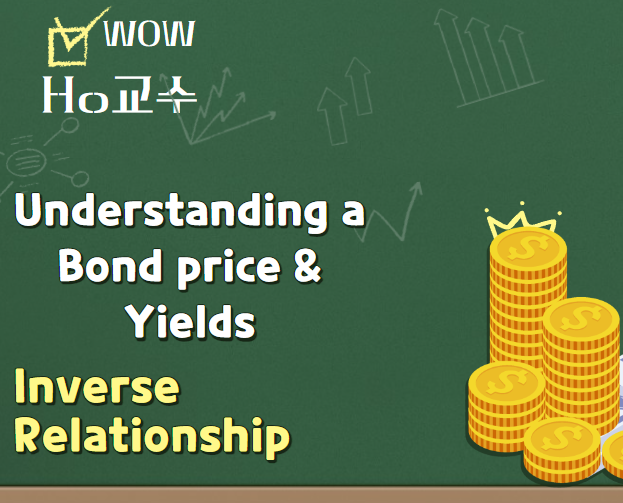Rising government bond yields indicate the opposite of rising government bond prices. However, many novice investors find it difficult to understand this relationship because they tend to think in terms of general stock prices or indices without comprehending bonds. In this session, we will take a step-by-step approach to understanding bonds, starting with the definition of bonds.

A bond
A bond is a debt instrument where money is lent, creating a liability certificate.
The certificate I’ve lent is the right to receive money.
However, bonds allow this certificate to be easily sold to another person for money.
Recognizing the value of this certificate and buying/selling it accordingly is the essence of understanding bonds.
Understanding Bonds
I bought a bond for 10 million won with a 3% interest rate, which pays both interest and principal after 1 year.
When the bond matures after 1 year, I can receive 10 million won + 300,000 won in interest.
However, due to sudden financial circumstances, I need to sell this bond after only 6 months, even though it was supposed to be sold after 1 year.
In that case, how much can I receive?
Intuitively, having held the bond for 6 months, I’m entitled to receive 300,000 won in interest. Additionally, I possessed 150,000 won in interest for the 6 months. Therefore, I would have a value of 101.5 million won.
The Relationship Between Bonds and Interest Rates
The calculation we’ve discussed assumes constant interest. However, what if interest rates change? Let’s consider the scenario where the 3% interest rate sharply rises to 15%.
If we hold a new bond at a 10% interest rate for 1 year, we would receive 10 million won + 1 million won = 11 million won.
Holding it for 6 months would result in receiving 10.5 million won.
But remember, the original 3% interest bond would have been worth 10.15 million won after 6 months.
Now, from the buyer’s perspective, if they buy the 10.5 million won bond, they would receive 11 million won, indicating a potential profit of 0.5 million won. On the other hand, if they buy the 10.15 million won bond, they would expect a profit of 0.15 million won. This creates a difference of about 0.35 million won.
Consequently, to sell the 3% bond, one would need to sell it for not 10 million won, but for 10 million – 0.35 million = 9.65 million won. This is because they want to make a comparable profit as they would by buying the 10% bond.
This example demonstrates the impact of changing interest rates on bond values and highlights the importance of understanding the relationship between bonds and interest rates.”
Relationship Between Bond Prices and Market Interest Rates
The lengthy explanation can be summarized in one sentence:
Bond prices move inversely to market interest rates
The Relationship Between Government Bond Yields and Market Interest Rates
However, bonds are often available not only for 1 year but also for longer periods like 10, 20, or 30 years.
As market interest rates rise, bond prices drop, causing potential interest losses over 30 years. Thus, long-term bonds experience significantly larger losses with fluctuations in market interest rates.
Insurance companies typically hold a substantial amount of bonds. With the U.S. interest rates rising substantially, U.S. government bond yields increase in tandem. Since bond prices move inversely to yields, insurance companies face significant losses.
The countries with the largest holdings of U.S. bonds are China and Japan. Consequently, China started selling off its U.S. government bonds, which Japan has been acquiring and accumulating.”
Conclusions
- Base Interest Rate (Central Bank) UP
- Market Interest Rate (Commercial Banks) UP
- Bond Interest Rate UP
- Bond Price DOWN – Bond ‘Price’ is inverse

